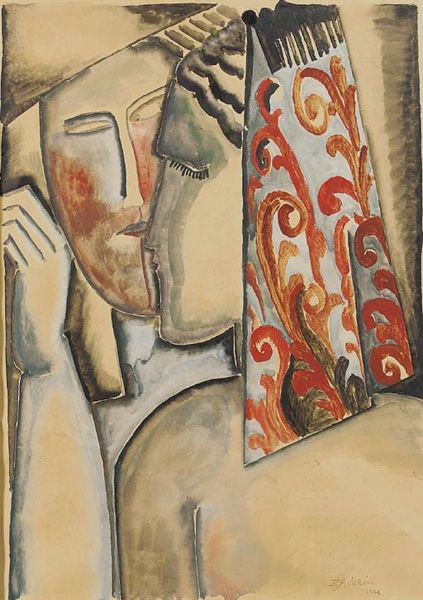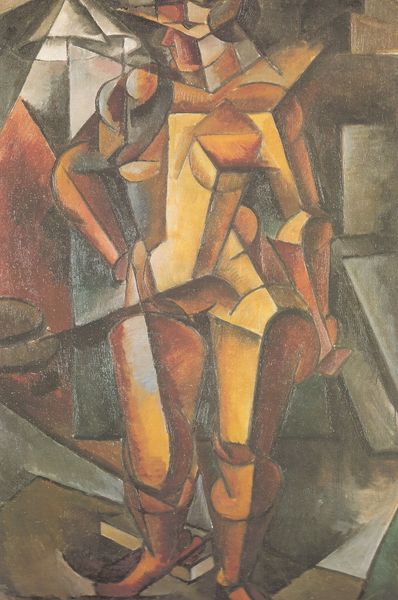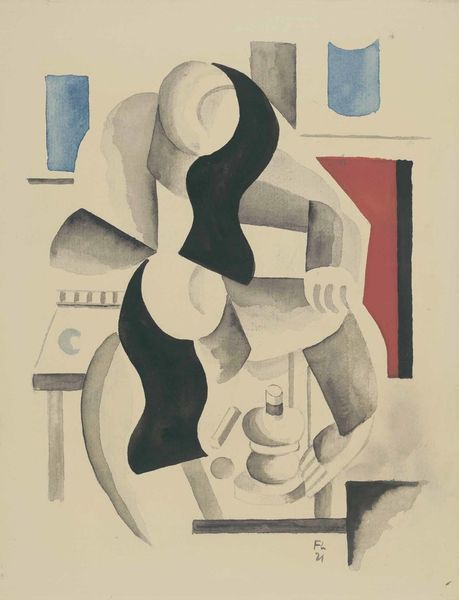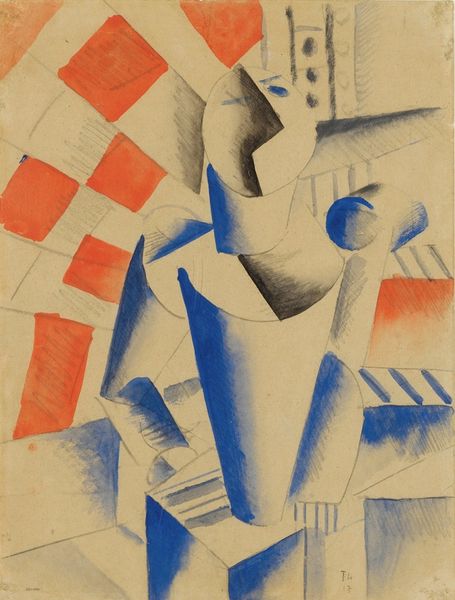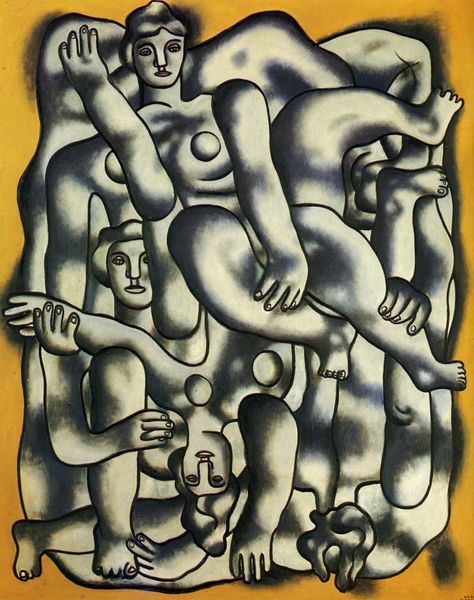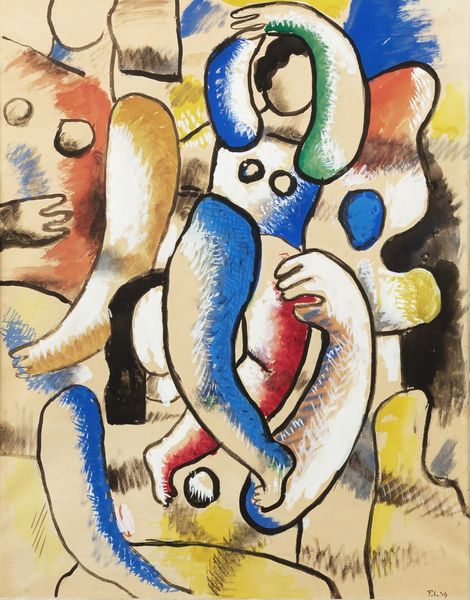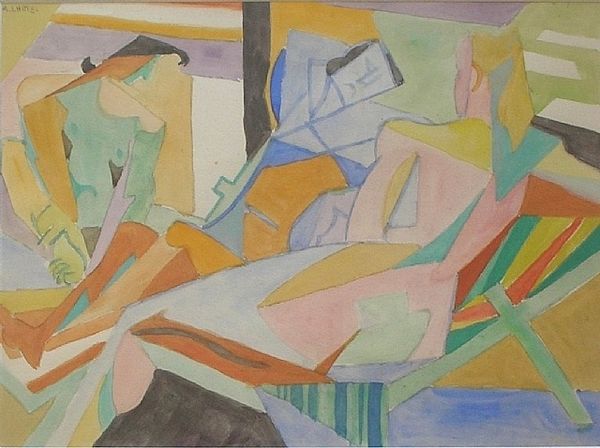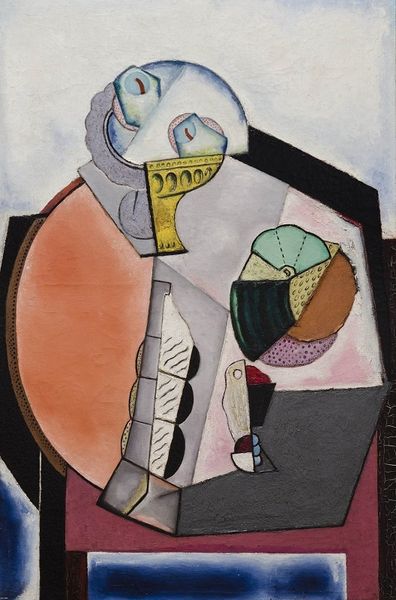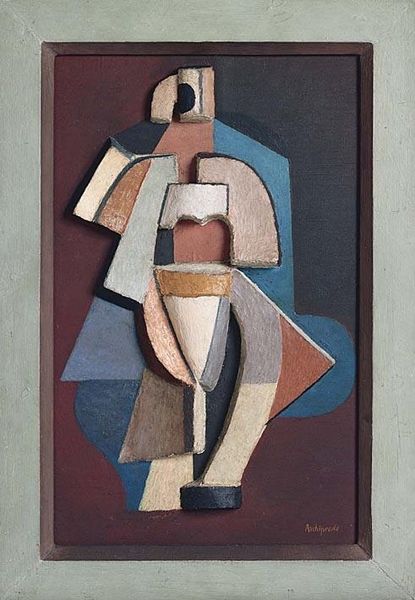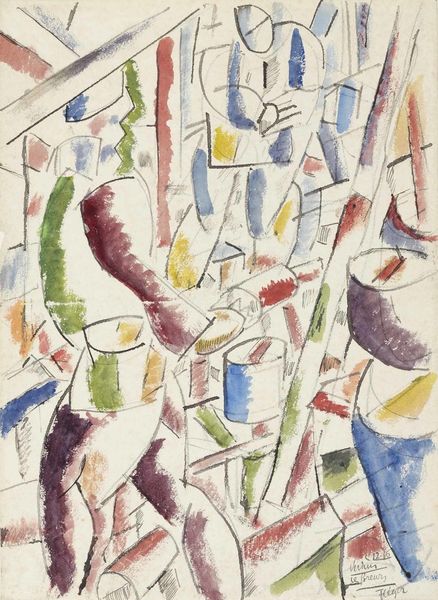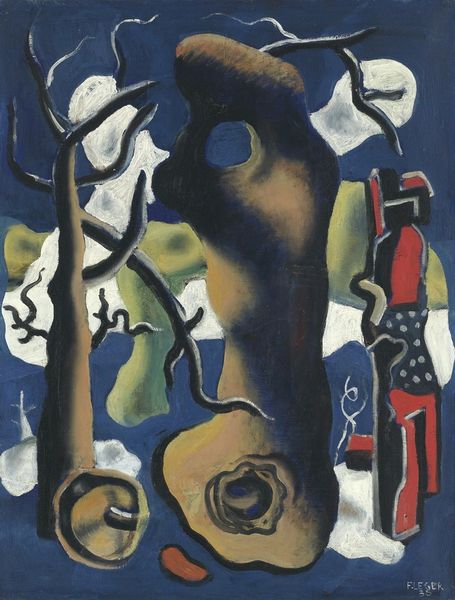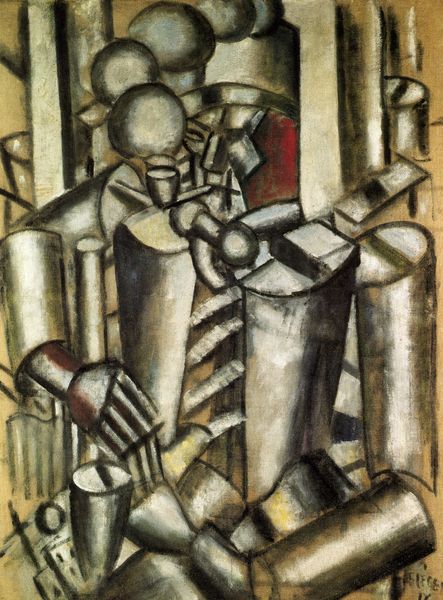
watercolor
#
cubism
#
landscape
#
figuration
#
watercolor
#
coloured pencil
#
watercolour illustration
#
watercolor
Copyright: Public domain US
Curator: Ossip Zadkine's watercolor, "Four People in a Village," created in 1921. I find myself immediately drawn to its melancholy stillness. What are your initial thoughts? Editor: Those muted blues and browns, the angular forms… it almost feels like a scene recovering from some untold conflict. There’s a fragility, a sparseness in both color and form. It feels post-war. Curator: The figures themselves seem hewn, almost sculptural, hinting at Zadkine's interest in materiality, how he renders them with such defined planes even in watercolour. Editor: True. The cubist influence is undeniable. But let's consider the implied narrative within these simplified forms. The arrangement feels deliberately symbolic, with some figures upright and others seated. Curator: How do you see that impacting our reading? Editor: Perhaps a hierarchy? Or maybe stages of life – a cycle from standing, full of potential, to settling, reflecting. The muted palette evokes memories of faded photographs, adding to the emotional complexity. Curator: It's fascinating how Zadkine balances representation and abstraction, using the properties of watercolor. Look at the bleeding of color, especially outlining their bodies, it creates a sense of ephemerality. The rough texture emphasizes a grounded reality, the landscape being an ever-present reminder of their toil. Editor: Those structures could represent homes, yet they appear incomplete, adding to the ambiguity. Are they sheltering these people, or merely present, indifferent to their plight? These shapes can act as signifiers for instability within the village itself. Curator: Perhaps they show how shelter as a material is dependent upon society's structure and those in it. Even these "homes" as just the base elements become an integral role within that space. Editor: A powerful idea. I also can't ignore that central figure seems to contemplate another figure as almost an embodiment of that instability and their struggle to retain roots within that place, while questioning their place within it. Curator: Indeed. Considering these notions and the artwork's context, seeing its construction emphasizes their experiences in the construction of societal structures. Editor: Looking closer has illuminated new paths through an older landscape, leading to so many different directions and interpretations. Curator: I see what you mean. Looking through your interpretations, these abstracted scenes offer a powerful glimpse into collective history viewed by many after the first World War.
Comments
No comments
Be the first to comment and join the conversation on the ultimate creative platform.
